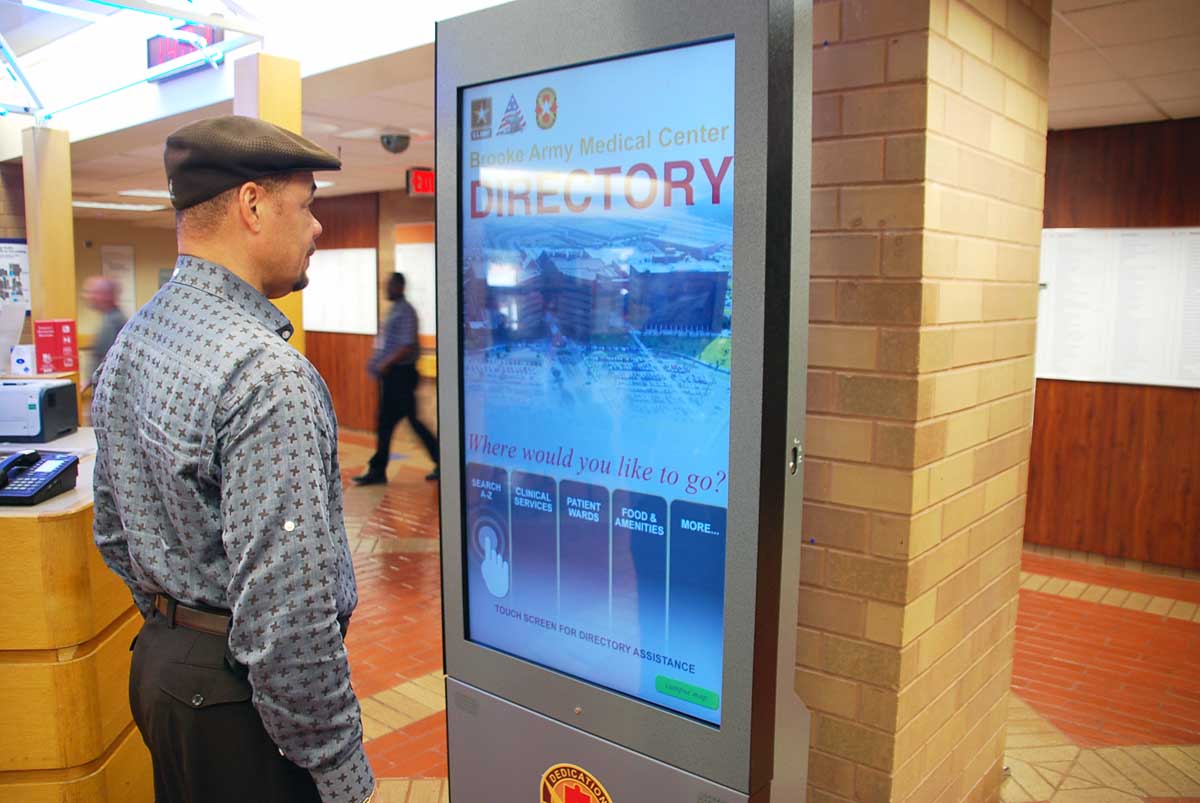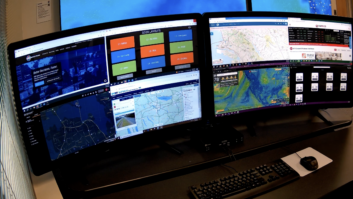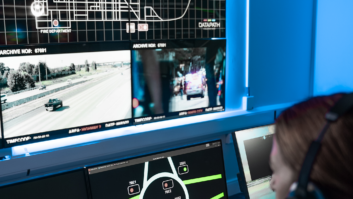
In the first part of this feature, we discussed how the use of voice control is emerging within the interactive display market – although it is not without disadvantages. But which applications suit it best?
It becomes clear that the question is not “voice or interactive displays?” – it’s “how will voice and interactive displays work together?” There are applications today for interactive displays for which voice is patently unsuited – but others where it can bring greater responsiveness. Each brings unique strengths – and, in fact, the two seem to be symbiotic.
“Interactive displays will continue to be needed in those environments where meetings happen – particularly to unify in-room and remote meeting participants, or where groups of people need to collaborate to find a productive outcome,” believes Natalie Harris-Briggs, vice president of marketing at workspace solutions company Avocor. “When AI becomes an element of the interactive display, voice can be used for control to ensure that the meeting experience for the user is simple and seamless. Voice recognition could also be an added benefit to the overall meeting space technology offering – authenticating the meeting through voice, for instance.”
Beyond this, voice will not displace interactive touchscreens, not least because there are environments where it is wholly inappropriate. “Voice control will also suffer in louder environments outside of the meeting and conference room, in multilingual environments and areas like education, where interactive displays would maintain strength,” says Joel Chimoindes, European commercial director at European AV distributor Maverick AV Solutions.
Similarly, a conversation with Alexa is hard to keep private. And while proactive voice applications may be in the future, today, interactive screens can provide information even when they’re not being interacted with. Complex choices will almost certainly be better made via an interactive screen.
Not all use cases
As Chris McIntyre-Brown, associate director, Futuresource Consulting, points out: “Voice can give a very precise interaction – but it is important that users can input a query and then narrow down the options. This may require a display to be included. Initially audio-only, the more recent devices for new applications are often including a display as well – which shows that voice alone cannot meet all use cases.”
As companies like Harman have demonstrated, the way forward will often see voice and touchscreens combined – and rather than threatening the position of displays, voice could strengthen their appeal. Yes, as voice technology matures, it will perhaps fill some application slots that would once have been occupied by interactive displays – but it’s easy enough to imagine a future where sales of interactive displays benefit by being augmented with voice.
“Interactive displays will only lose market share where voice is not integrated into the display,” avers Kevin Hague, vice president, technology strategy for Harman International. “In some cases, where information is easier asked than looked at on the screen, there are cases where the interactive display may be impacted – but the overall market size will increase with the enhanced user functionality brought by voice.”
Will those displays also feature, for example, gesture control and/or facial recognition? The answer has to be: why not?
“Not only will interactive displays very likely be deployed with some form of intelligent voice interface over the next few years,” Hague continues, “but this will go beyond voice control and will include multi-modal interactions such as screen, touch, gesture and mid-air haptic systems providing an enhanced user experience.”
“Generally,” believes McIntyre-Brown, “voice shows the best fit with those applications in public or open spaces for a combination of reasons. One of these is that providing more automated access to information will provide additional levels of service, complementing the staffed resources in place – think hotel lobbies, cinemas, museums, transit hubs, airports, retail outlets, malls and showrooms. People will often want to access various types of information, from directions, status and updates to product information and placing orders. There is less constraint in these use cases: data does not need to be tied to an individual’s account; consumers can get audio and visual feedback; the typical information being accessed is public and generally available – so privacy is not such a barrier.”
“I see voice control as being part of the solution,” says Harris-Briggs, “and therefore as development of the voice control proposition increases, it will be in conjunction with the interactive display, camera and video collaboration elements to build a solution which brings together voice, video and audio efficiently and effectively.”
Exciting prospect
No less clear than “how will voice and interactive displays work together?” is that voice represents an exciting prospect for integrators. With the advent of Alexa For Business and IBM’s Watson offering – both clearly encouraging the development of enterprise-wide applications using voice – the opportunity will exist to differentiate and add value. That should be especially attractive in a technology marketplace that is becoming increasingly commoditised.
“Where true simplicity can be achieved through voice control, the need for interactive displays will diminish, creating opportunities for completely seamless control,” notes Chimoindes. “This type of innovation also has huge opportunities for delivering solutions for the blind and visually impaired.”
The issue, perhaps, is about backing the winner. Google and Amazon are currently the clear leaders, with IBM on their heels. But in the same way as Microsoft made a (very convincing) play for the huddle space with the Surface Hub, will it also pursue its Cortana technology in the desktop space? Like IBM, the company is well entrenched and respected in the corporate environment.
Inevitable
Harris-Briggs believes it will. “Microsoft sees voice control as an important part of its enterprise offering moving forward,” she says. “With the emergence of Microsoft Azure and the ratification of brands such as Microsoft and Google, I think it’s only inevitable that more vendors emerge with voice control systems in the future.”
Harman’s Hague, however, believes there is an opportunity for new entrants to the field. “There are other companies in the ecosystem that provide more customised functionality for people creating interactive displays,” he notes.
It seems inescapable that voice will become as accepted as a user interface in business as the keyboard, mouse or finger – but interactive displays will also thrive, almost certainly in conjunction with voice. It will, though, be interesting to see whether the prescience of perhaps the ultimate sci-fi movie 2001: A Space Odyssey will once again be reinforced. How long will it be before, as you initiate a collaboration session, a chilling voice asks: “Just what do you think you’re doing, Dave?”
www.avocor.com
www.futuresource-consulting.com
https://pro.harman.com
www.tdmaverick.eu







